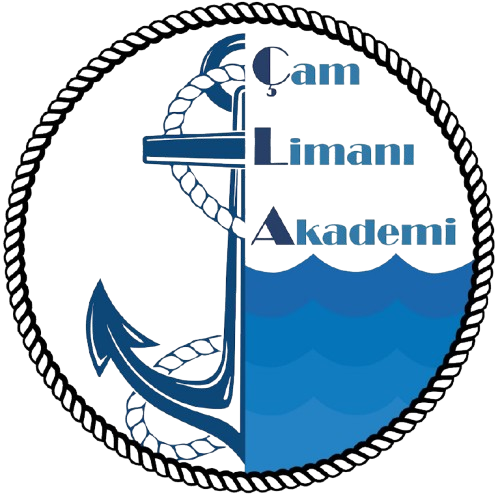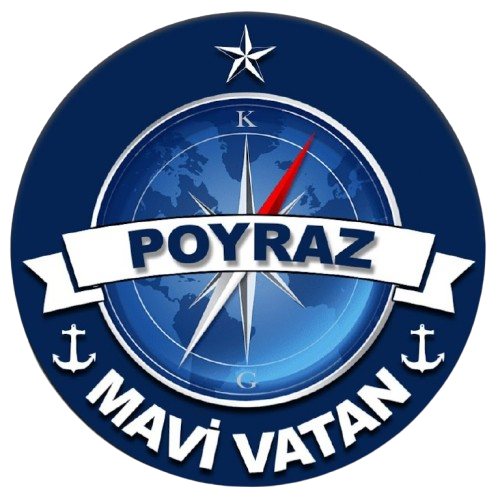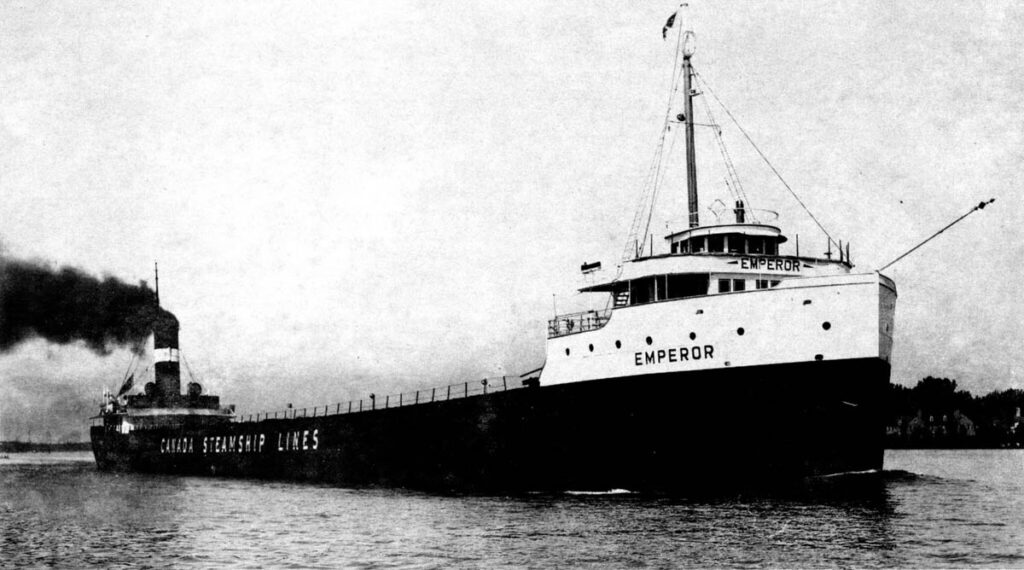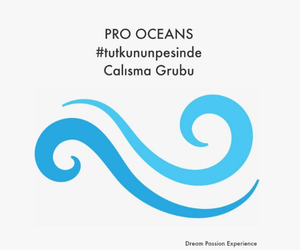The SS Emperor was a Canadian steel-hulled lake freighter that operated from 1911 until 1947. Constructed by the Collingwood Shipbuilding Company in Collingwood, Ontario, the vessel was built between 1910 and April 1911 for Inland Lines, Ltd., based in Midland, Ontario. She officially entered service on May 3, 1911.
Later in her career, the Emperor was acquired by Canada Steamship Lines, headquartered in Montreal, Quebec. Under this new ownership, she hauled a variety of cargoes, although her primary task involved transporting iron ore—initially to Point Edward, Ontario, where the ore was then shipped by rail to Hamilton. Following the completion of the fourth Welland Canal, the vessel was able to deliver ore directly to Hamilton by water. Over the course of her working life, the Emperor was involved in multiple maritime incidents.
After unloading a shipment of coal in Fort William, Ontario, on June 3, 1947, the Emperor proceeded to nearby Port Arthur, where she was loaded with 10,264 long tons (11,496 short tons; 10,429 metric tons) of iron ore destined for Ashtabula, Ohio. The vessel departed Port Arthur at 10:55 p.m. under clear skies and favorable visibility.

Around midnight, command of the watch was transferred from Captain Eldon Walkinshaw to First Mate James A. Morrey. In the early hours of June 4, shortly before 4:15 a.m., the Emperor struck Canoe Rocks near the northeastern tip of Isle Royale. The impact caused the ship to sink within 20 to 35 minutes. Of the crew on board, twelve lives were lost. The remaining 21 were rescued by the U.S. Coast Guard cutter Kimball.
The wreck of the Emperor is the most recent and the second largest shipwreck around Isle Royale, exceeded in size only by the freighter Chester A. Congdon, which also met its fate on Canoe Rocks. The remains of the Emperor lie at depths ranging from 25 to 175 feet (7.6 to 53.3 meters). The bow section is partially broken and rests in shallower waters, while the stern remains largely intact in deeper areas.
Final Voyage
On June 3, 1947, after delivering a coal shipment in Fort William, the Emperor proceeded to the Canadian National Railway ore dock in Port Arthur. There, she was loaded with 10,264 long tons (11,496 short tons; 10,429 metric tons) of iron ore sourced from the Steep Rock Mine, a process that took approximately six to seven hours. She departed for Ashtabula, Ohio, at 10:55 p.m. (EST) under the command of Captain Eldon Walkinshaw. Two of the ship’s 35 crew members remained behind in Fort William.
At the time of departure, the vessel had a draft of 21.3 feet (6.5 meters) at the bow and 21.9 feet (6.7 meters) at the stern. Conditions on the lake were calm, with clear skies and minimal wind, providing good visibility. At midnight, Captain Walkinshaw turned over the watch to First Mate James Morrey, who had also overseen the ore loading earlier that day. Just before 4:15 a.m. on June 4, the Emperor struck Canoe Rocks at the northeast tip of Isle Royale and split into two.
Approximately ten minutes after the Emperor struck Canoe Rocks, Captain Walkinshaw gave the order to abandon ship, as the vessel had developed a severe list. The starboard lifeboat was launched successfully but was taking on water due to a missing bilge plug. The port-side lifeboat was pulled under and capsized as the ship went down. According to the night steward, there was an explosion from the boilers during the sinking. The vessel went under within 20 to 35 minutes.
The U.S. Coast Guard Cutter Kimball, which had been working on navigation lights near Blake Point, received the Emperor’s SOS and reached the site within 35 minutes. The Kimball rescued 21 survivors and recovered the body of cook Evelyn Schultz before returning to Fort William. The cutter then headed back to the wreck site to continue the search for additional survivors and victims. Canada Steamship Lines also hired the excursion vessel Coastal Queen to aid in the recovery efforts, but worsening weather conditions prevented diver E.J. Fowler, who was aboard the Coastal Queen, from reaching the wreck.
The investigation into the sinking of the Emperor faced significant challenges, as key crew members—Captain Eldon Walkinshaw, First Mate James Morrey, and helmsman J. Prokup—were all among the fatalities. The Canadian Department of Transport concluded that Morrey was at fault, citing his failure to maintain a proper watch. Investigators believed Morrey was likely sleep-deprived at the time of the accident and had neglected essential navigational procedures needed to safely guide the vessel between Isle Royale and Passage Island.
The inquiry also criticized the practice of requiring the First Mate to oversee cargo loading during a period when he should have been resting, which likely left Morrey exhausted and impaired his ability to perform his duties effectively. Additionally, Prokup, who was unfamiliar with that region of Lake Superior, did not recognize the navigational error that ultimately led to the grounding.
The investigation further highlighted safety shortcomings, including the use of wooden lifeboats and the absence of lifeboat drills aboard the Emperor in 1947. Despite the tragedy, Captain Walkinshaw was fully cleared of blame. The Board of Investigation stated that he acted swiftly and efficiently under extremely difficult conditions. They also commended the captain and crew of the U.S. Coast Guard Cutter Kimball for their prompt and effective rescue efforts.
From 1980 to 1985, the Emperor ranked as the second most visited shipwreck in Isle Royale National Park, with only the excursion steamer America attracting more divers. By 2009, however, the Emperor had become the park’s most commonly explored wreck, drawing over 350 of the 1,062 recorded dives to shipwrecks in the area that year. In 1984, the wreck was added to the National Register of Historic Places and has since become a well-known destination for recreational scuba divers.
THE SCUBA NEWS Link !
DemirHindiSG 12 Ağustos 2025-20:06







